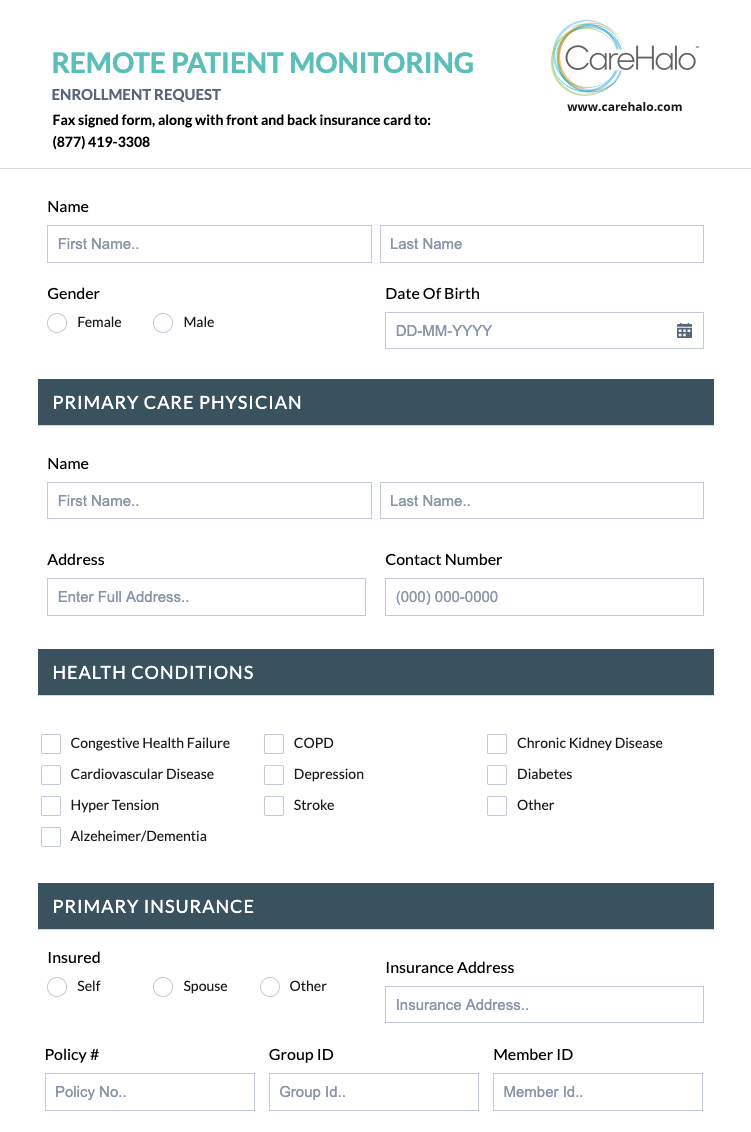Discover the Best Remote Patient Monitoring Software for Your Method
Discover the Best Remote Patient Monitoring Software for Your Method
Blog Article
The Future of Health Care: Remote Client Monitoring Simplified
As healthcare remains to develop, one location that holds enormous assurance is remote client surveillance. The idea of streamlining this procedure via technical developments is improving the method treatment is provided and received. With a concentrate on improving patient results and improving health care delivery, remote surveillance is positioned to reinvent the market. By checking out the advantages, technological technologies, and future patterns in this area, we can gain important understandings right into the transformative capacity of remote patient monitoring.
Advantages of Remote Client Surveillance
Remote client monitoring offers a plethora of benefits for both medical care service providers and people alike. Furthermore, remote patient surveillance improves the total top quality of care by giving a more comprehensive and all natural sight of people' wellness status beyond standard in-person visits.
In addition, remote client surveillance can result in better individual results and fulfillment. People can appreciate the ease of getting care in the convenience of their own homes while still knowing that their wellness is being closely checked. This can lead to boosted individual involvement and adherence to therapy strategies, ultimately causing better health and wellness end results. Additionally, remote tracking can lower the requirement for regular health center check outs, reducing healthcare prices for both patients and service providers. Overall, the benefits of remote patient tracking are clear, making it a valuable device in modern-day healthcare delivery.
Technology Driving Remote Surveillance
In the realm of modern-day health care, technological improvements play an essential duty in driving the advancement and efficiency of remote patient surveillance. The assimilation of innovative modern technologies such as wearable gadgets, mobile applications, and cloud-based systems has actually revolutionized the means doctor from another location keep track of and manage individual wellness - software for remote patient monitoring. These innovations enable continual real-time monitoring of important signs, medicine adherence, and other essential health data, permitting prompt interventions and customized care plans
One key technology driving remote surveillance is the Net of Things (IoT), which allows seamless connectivity in between medical devices and medical care systems. IoT tools such as smartwatches and wireless sensing units gather and transfer patient data to central systems, facilitating remote monitoring from anywhere in the world. Artificial knowledge (AI) and artificial intelligence algorithms better boost remote tracking by analyzing vast quantities of individual information to discover patterns, predict health trends, and alert doctor to potential concerns.
Effect On Health Care Shipment
With the integration of innovative modern technologies driving remote individual tracking, the influence on healthcare delivery is becoming increasingly extensive and transformative. Remote person tracking enables doctor to offer more proactive and personalized like patients, bring about improved wellness results and lowered hospital admissions. By from another location tracking vital signs, symptoms, and medicine adherence, healthcare professionals can step in early, avoiding complications and boosting the overall high quality of treatment.
In addition, remote surveillance boosts access to health care solutions, particularly for individuals in underserved or rural locations. Clients can receive continual monitoring and assistance from their homes, getting rid of the requirement for frequent in-person sees. This not only saves time and reduces costs for both patients and medical care facilities yet also minimizes the danger of exposure to transmittable illness, a crucial factor to consider in the present health care landscape.
Additionally, remote individual tracking allows healthcare providers to far better prioritize and allot sources care based upon real-time data. By recognizing high-risk patients and stepping in immediately, health care shipment becomes much more reliable and efficient, ultimately resulting in a more sustainable and patient-centered healthcare system.
Improving Patient End Results

Furthermore, RPM enables for positive management of chronic problems, lowering the chance of severe exacerbations and healthcare facility readmissions. Individuals take advantage of enhanced benefit and comfort, as they can receive treatment in their own homes while staying attached to their doctor. This constant monitoring not just boosts client complete satisfaction but additionally promotes a sense of empowerment and engagement in their very own health and wellness management.
Future Trends in Remote Surveillance
Embracing innovative innovations in remote client surveillance is shaping the future landscape of healthcare distribution. One significant fad is the increased use of wearable gadgets and sensing units to collect real-time information, enabling health care companies to monitor patients continuously without the demand for frequent in-person brows through.

In addition, telehealth platforms are becoming much more innovative, allowing for digital examinations, remote medical diagnosis, and remote person keeping track of all in one integrated system (software for remote patient monitoring). This alternative strategy to remote tracking is enhancing healthcare distribution, boosting person fulfillment, and eventually, enhancing overall top quality of treatment
Conclusion
In conclusion, remote patient surveillance uses various benefits in medical care delivery, driven by innovations in innovation. It has the potential to improve patient end results and revolutionize the way medical care is Clicking Here delivered. Future patterns in remote tracking will certainly proceed to form the landscape of health care, providing opportunities for more personalized and reliable individual care.
Remote patient monitoring presents a wide range of advantages for both health care providers and patients alike. Furthermore, remote client surveillance enhances the overall quality of treatment by giving a much more holistic and extensive sight of people' health and wellness standing past standard in-person brows through.
Additionally, remote individual tracking can lead to enhanced client results and contentment. Remote person monitoring enables medical care companies to use more positive and tailored treatment to clients, leading to improved health results and lowered hospital admissions. Remote patient surveillance (RPM) plays a significant duty in enhancing individual end results by providing constant, real-time data that allows medical care carriers to step in quickly and change therapy plans as needed.
Report this page